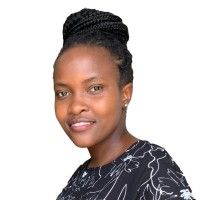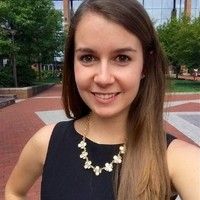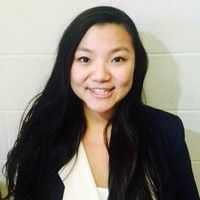Three women who recently completed the Department of Bioengineering master’s program highlight the depth of the program’s offerings, a curriculum designed to meet each student’s academic goals, and the variety of career opportunities open to graduates. Nelly Cheruiyot ’20, Megan Kozar ’18 and Whitney Lai ’18 each blazed their own path through the program, and they are now pursuing promising careers in challenging industry sectors.
Cheruiyot, a biochemist in assay development at Vessel Health, came to Lehigh from Kenya as an undergraduate to have access to more resources for her study, but chose Lehigh as a great place for a student new to the United States to get started. “Lehigh has a very high reputation as an engineering school obviously, and it’s not hectic here like it is in New York,” she said. After completing her bachelor’s degree and looking at graduate programs in bioengineering at other schools, Cheruiyot was drawn to the flexibility of Lehigh’s curriculum. “I liked the fact that there were different research focus areas, such as biocomputations, materials and therapies, and diagnostics and devices,” she said. “I focused on biopharmaceutical engineering as I had a strong background in biology and chemistry.”
At Vessel, Cheruiyot is enjoying the variety of her work, and the chance to take the initiative and pursue promising leads. “I don't do the same thing day in, day out, because it's still a young company,” she says. “There is a lot of room for innovation in my job, and a lot of room for growth.”
While Cheruiyot’s innate talent and technical background has made her a natural quick study, she also credits the teachers and curriculum at Lehigh as factors for her success in the fast-moving startup environment at Vessel. “Nobody can prepare you for everything, but at Lehigh we were given what we needed to quickly learn new skills and concepts.”
Kozar sensed she was headed for a career in bioengineering early on. “I’ve always been interested in the human body and how therapies are developed to help people,” she said. “I had an interest in medicine but didn't want work in health care per se, so bioengineering was the right mix for me.” Since Kozar also studied at Lehigh as an undergraduate, the master’s program was a chance for her to continue to work with professors she knew well. “The engineering here is so strong, and I had a great connection with the faculty,” she said. “And in the master’s program, I found that the professors treat you like a colleague. They really respect it when you come to them with fresh ideas, and they'll support you when you pursue them.”
Kozar feels that the program gave her the chance to explore several different areas, as well as the knowledge base to take her degree in whatever direction her interests and opportunities would lead. “There was a lot of support for people who wanted to follow the academic route, but there was plenty of support too for people like me who wanted to go into industry,” she said. “You could weave your way through the program as you saw fit, depending on your ultimate career goal.” Kozar particularly appreciated some of the real-world aspects of the course work, which she applies on a regular basis in her job. “Our classes gave us an understanding of things like regulatory requirements, product design and development that are often overlooked in other programs,” she said. “They did a really good job providing us with a well-rounded sample of the skills we would need to go into a lot of different fields."
After graduating, Kozar took a post at Sanofi Pasteur, and was there during the height of the COVID-19 pandemic. Her work at the company was part and parcel of the nation’s efforts to produce COVID vaccines at warp speed, as Sanofi assisted with processing and delivery of the vaccines. “It was very chaotic in the sense that we really had to change our ways of working to limit our exposure before we could actually do our work,” she recalled. “Managing the COVID project was a significant challenge because we were trying to balance the rush to try to get something out quickly, while ensuring the highest quality as possible. It was exciting, and it felt good to be a part of something that made such an impact on public health.”
After several years working at Sanofi Pasteur, Kozar began a new position as an associate scientist at Johnson & Johnson in June, where she now creates processes to make monoclonal antibodies and cell-based therapies. “I think what sets engineering apart from a lot of other fields is its practical, problem-solving nature,” she says. “You have to provide solutions or produce products that are ultimately going to be useful and cost-effective. I’ve really enjoyed that aspect of my work.”
Lai also found that the faculty encouraging her to branch off and try out new things was an integral part of her experience in the bioengineering master’s program. “I think what made me really love Lehigh was just how passionate the professors are, and how much they believe in their students,” she said. While at Lehigh, Lai co-founded the Lehigh chapter of Enabling the Future, a global volunteer organization that produces prosthetics using 3-D printing for those in underserved communities. “The initiative is focused on children, since oftentimes children need to wait until they're 18 to get a prosthesis because they keep growing and the manufacturing is expensive,” Lai says.
After completing her studies, Lai parlayed her expertise into orthopedics, constructing models based on MRI scans to assist doctors preparing for complex operations. She then was hired by Surgical Theater, a medical startup, where she is a senior virtual reality clinical engineer, creating virtual replications to assist in the analysis and planning for surgical procedures and patient consultations. Working at the nexus between product developers and doctors, Lai’s role is critical to making the surgical simulations successful. “My job is to use the company software to create these simulations. If a doctor says they need to see more of that section of the spinal cord, I make it happen,” she says. “I’m their eyes and ears, and several really cool projects have stemmed from this type of collaboration.”
Story by Chris Quirk



